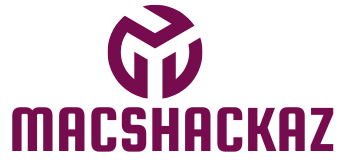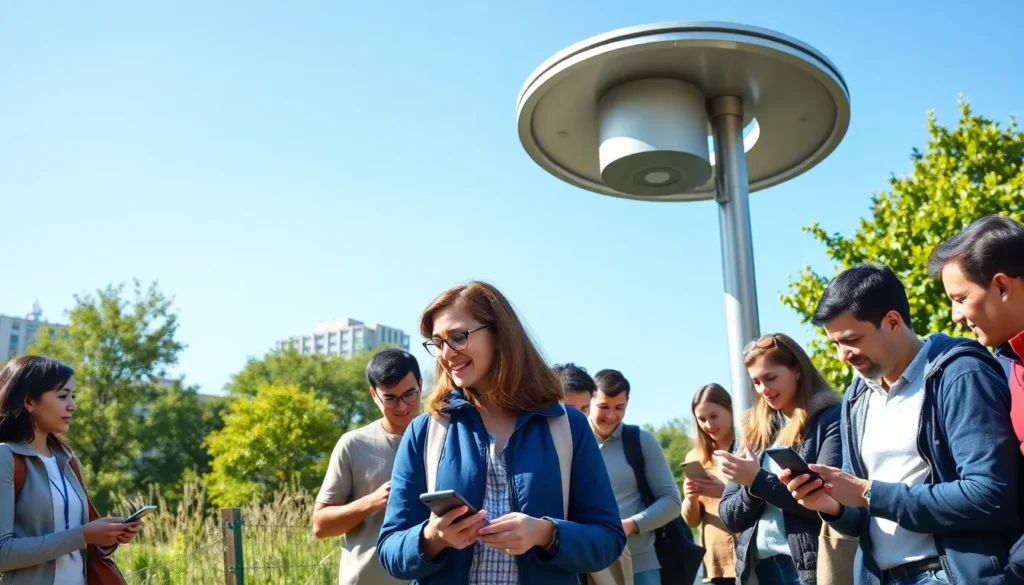In a world where everything seems to be connected, LoRaWAN is the unsung hero quietly revolutionizing the Internet of Things. Imagine a network that can send data over long distances without breaking a sweat. That’s LoRaWAN for you—it’s like the superhero of low-power, wide-area networks, swooping in to save the day for smart cities, agriculture, and even your pet’s collar.
Table of Contents
ToggleOverview of LoRaWAN
LoRaWAN, a low-power wide-area network protocol, significantly enhances IoT connectivity. This technology operates in unlicensed frequency bands, which lowers operational costs while facilitating long-range communication. Devices utilizing LoRaWAN can transmit data over distances exceeding 10 kilometers in rural settings and several kilometers in urban environments.
Applications of LoRaWAN are diverse, impacting industries such as agriculture, where it supports remote monitoring of soil and weather conditions. Smart cities leverage LoRaWAN to enhance services like street lighting, waste management, and environmental monitoring. Tracking companion animals or assets becomes simpler with this protocol due to its robust connectivity in challenging environments.
The architecture of LoRaWAN consists of three main components: end devices, gateways, and network servers. End devices include sensors or actuators, which collect and transmit data. Gateways act as intermediaries, forwarding messages between end devices and network servers. Network servers handle data processing and management, ensuring security and efficient data routing.
Data rates in a LoRaWAN network range from 0.3 kbps to 50 kbps, depending on signal conditions and range requirements. Each device can utilize adaptive data rates to optimize battery life and communication reliability. In a typical setup, devices communicate multiple times a day, consuming minimal power.
LoRaWAN’s security features include end-to-end encryption and unique identifiers for each device. These measures protect data integrity and privacy, making it a suitable choice for sensitive applications. Overall, the scalability and flexibility of LoRaWAN positions it as a leading solution for the evolving IoT landscape.
How LoRaWAN Works
LoRaWAN operates using a structured approach to connectivity for IoT devices. Devices communicate over long distances while conserving energy, making this technology effective in various applications.
Network Architecture
The LoRaWAN architecture includes three essential components. End devices act as sensors or actuators, connecting to the network. Gateways receive data from these devices and transmit it to network servers. Network servers manage data processing, security, and device communication. This configuration enables seamless integration and efficient data flow. Additionally, multiple gateways can connect to a single network server, enhancing coverage and reliability in both urban and rural settings.
Communication Protocol
Communication in LoRaWAN utilizes a unique protocol tailored for low-power, long-range applications. It employs a chirp spread spectrum modulation technique, ensuring robust signals even in noisy environments. Devices transmit data at various rates, ranging from 0.3 kbps to 50 kbps, depending on distance and interference. Adaptive data rates optimize energy use while improving transmission reliability. Security protocols, such as end-to-end encryption, guarantee data protection during transmission. Thus, the communication protocol makes LoRaWAN a highly effective choice for diverse IoT solutions.
Advantages of LoRaWAN
LoRaWAN offers significant benefits that make it an ideal choice for various IoT applications. Its unique characteristics enhance both efficiency and connectivity.
Long Range Communication
Long-range communication stands out as one of the primary advantages of LoRaWAN. Devices can transmit data over distances exceeding 10 kilometers in rural environments. Urban settings still see impressive ranges of several kilometers. This capability significantly reduces the number of gateways needed, cutting deployment costs while improving coverage. Businesses and organizations benefit from using fewer access points to achieve extensive network coverage, ensuring consistent data transmission over large areas.
Low Power Consumption
Low power consumption is another key advantage of LoRaWAN technology. Devices equipped with LoRaWAN chips consume minimal energy, extending battery life often to several years. This efficiency facilitates the use of various sensors and devices in remote locations without frequent battery replacements. Cost savings emerge from reduced maintenance and operational expenses. Furthermore, the low-energy requirement allows for sustainable IoT implementations, which is crucial for applications in smart cities and agriculture.
Applications of LoRaWAN
LoRaWAN technology facilitates a variety of applications across different sectors. The following sections highlight key use cases, showcasing its effectiveness.
Smart Cities
Smart cities leverage LoRaWAN for enhanced urban management. Sensors monitor environmental conditions, traffic patterns, and energy usage. Real-time data from these sensors promotes efficient resource allocation. Streetlights can adjust brightness based on pedestrian movement, reducing energy consumption. Waste management benefits from sensors that notify collection services when bins are full. Cities utilizing LoRaWAN can optimize operations, fostering sustainability while improving the quality of life for residents.
Agriculture
In agriculture, LoRaWAN proves beneficial for precision farming. Sensors track soil moisture levels, temperature, and crop health, allowing farmers to make informed decisions. Remote monitoring helps manage irrigation systems effectively, conserving water resources. Livestock tracking systems utilize LoRaWAN to enhance animal welfare and security. Farmers adopting this technology experience increased yields and reduced operational costs, driving sustainable agricultural practices.
Challenges and Limitations
LoRaWAN presents several challenges that impact its widespread adoption and performance.
Interference and Security
Interference poses a significant challenge for LoRaWAN networks operating in unlicensed frequency bands. Various devices within these bands can create noise, affecting the quality of communication. Security remains a critical concern, given the potential for unauthorized access to devices and data. End-to-end encryption addresses some vulnerabilities, yet the reliance on unique device identifiers may sometimes fall short. Provisioning devices securely can complicate deployment, making it vital for network operators to adopt robust security practices.
Scalability Issues
Scalability challenges also arise within LoRaWAN networks. As the number of connected devices increases, managing network performance becomes complex. Increased demand for data throughput can strain network servers, leading to congestion. Device density in urban areas may diminish coverage if gateways are not strategically positioned. Additionally, maintaining battery life for a growing number of devices requires careful planning. Solutions must be implemented to optimize resource allocation while balancing performance and device longevity, ensuring the network can grow alongside user needs.
Future of LoRaWAN
Innovations in LoRaWAN technology are set to reshape the landscape of Internet of Things applications. New developments aim to enhance connectivity and expand the range of compatible devices. The growing demand for sustainable solutions drives the need for improved power efficiency and extended battery life in networked devices.
Integration with advanced technologies such as artificial intelligence can optimize data processing within LoRaWAN networks. Examples include utilizing AI algorithms to analyze data from sensors in real-time, which enables smarter decision-making in various sectors. Smart cities can particularly benefit from this integration by improving traffic management and energy efficiency through data-driven insights.
Collaboration with stakeholders across industries will play a crucial role in LoRaWAN’s expansion. Developers and manufacturers will need to prioritize partnerships to create a more robust ecosystem, enhancing service offerings and infrastructure. The upcoming rollout of 5G technology may further complement LoRaWAN by providing high-speed data transmission, facilitating seamless communication between devices.
Looking ahead, the emphasis on security will be paramount as threats to data integrity persist. Researchers and engineers are continually working on strengthening encryption methods to fend off potential breaches. Enhanced security protocols may encourage wider adoption by addressing the concerns of businesses that handle sensitive data.
Growth opportunities for LoRaWAN extend into niche markets. Areas such as healthcare and logistics are exploring its capabilities to monitor assets and track inventory, underscoring its versatility. By enabling real-time updates, LoRaWAN can support critical operations and drive efficiency across diverse applications.
The future of LoRaWAN appears promising, with innovations on the horizon poised to enhance the technology’s impact on IoT solutions. Stakeholder collaboration and a focus on security are essential for maximizing LoRaWAN’s potential as it evolves and adapts to emerging challenges.
Conclusion
LoRaWAN stands at the forefront of IoT innovation with its ability to deliver long-range connectivity and low power consumption. Its applications span various sectors from smart cities to agriculture demonstrating its versatility and efficiency. As the demand for sustainable solutions grows the integration of advanced technologies will only enhance LoRaWAN’s capabilities.
While challenges like interference and security concerns persist the ongoing evolution of LoRaWAN promises to address these issues. The future looks bright as collaboration among industry stakeholders and advancements in technology pave the way for even greater adoption and impact. Embracing LoRaWAN could lead to transformative changes in how data is collected and utilized across numerous fields.





